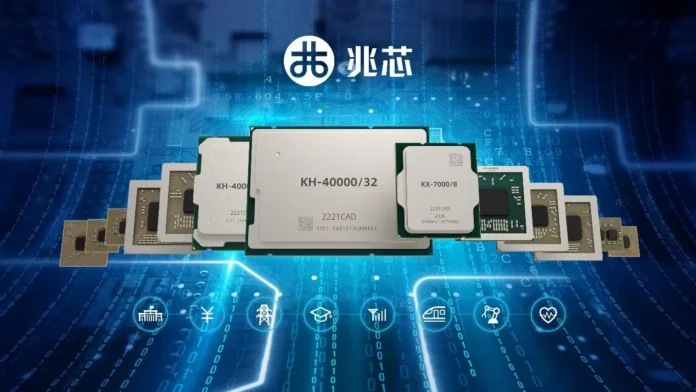The Shanghai World Expo 2025 was the platform for many new and innovative technologies to be introduced to the world. Among them was Zhaoxin’s latest offering – the KH-5000 series, a new generation of server processors designed specifically for China’s data center and enterprise systems.
The KH-5000 series of server CPUs is a significant upgrade over its predecessor, the KH-4000 series. It boasts increased core counts, better memory support, and faster connectivity, making it a game-changer for the technology industry in China.
One of the most significant improvements in the KH-5000 series is the increased core counts. The new CPUs come with an impressive 96 cores, more than double the number of cores in the KH-4000 series. This increase in core count translates to a significant boost in performance, making the KH-5000 series ideal for handling heavy workloads and complex tasks.
In addition to the increased core count, the KH-5000 series also offers better memory support. It is built using the latest DDR5 memory technology, which provides faster data transfer speeds and higher bandwidth. This means that the new CPUs can handle data-intensive processes more efficiently, improving overall system performance.
Another noteworthy feature of the KH-5000 series is its support for the next generation of PCIe technology – PCIe 5.0. This means that the CPUs can handle significantly higher data transfer speeds, allowing for quicker access to data and more efficient processing. It also makes the KH-5000 series future-proof, ensuring compatibility with upcoming technologies.
But perhaps the most impressive aspect of the KH-5000 series is the innovative chiplet design used in its production. This design allows for greater flexibility and scalability, allowing for the easy addition of more cores and memory in the future. It also makes the CPUs more energy-efficient, reducing power consumption and heat generation.
The launch of the KH-5000 series marks a significant milestone for Zhaoxin, a joint venture between the Shanghai-based company Zhaoxin Semiconductor and VIA Technologies from Taiwan. It is a testament to the company’s dedication to innovation and its commitment to meeting the evolving needs of China’s technology industry.
The KH-5000 series is the first in a line of products that Zhaoxin plans to introduce over the next few years. The company has also revealed its plans to expand its product range to include desktop processors, further solidifying its position in the Chinese market.
The latest CPUs from Zhaoxin have already garnered significant attention and interest from industry experts and tech enthusiasts worldwide. With its impressive performance and advanced features, the KH-5000 series is set to change the game in the server processor market, not just in China but globally.
Moreover, the launch of the KH-5000 series is a significant step towards China’s goal of achieving self-sufficiency in the technology industry. With the trade tensions between China and the United States, it has become essential for the country to rely on its domestic technology manufacturers. Zhaoxin’s KH-5000 series is a shining example of China’s ability to produce cutting-edge technology that can compete with the best in the world.
The future looks bright for Zhaoxin and its KH-5000 series. With the demand for data center and enterprise systems on the rise, the new CPUs are expected to be a huge success in the market. The KH-5000 series has already made a strong impression at the Shanghai World Expo 2025, and it is only a matter of time before it makes its mark on the rest of the world.
In conclusion, the introduction of the KH-5000 series at the Shanghai World Expo 2025 has been a groundbreaking event for Zhaoxin and the Chinese technology industry. With its superior performance, advanced features, and innovative design, the KH-5000 series is set to revolutionize the server processor market. We eagerly anticipate the future developments from Zhaoxin and its contributions to China’s growing dominance in the global technology arena.

